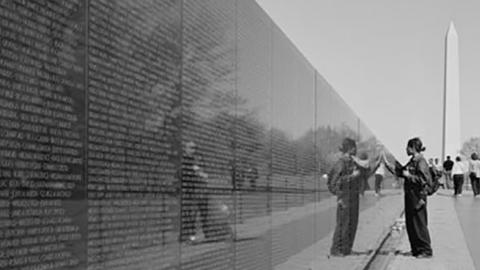A mainstream media that reshapes reality to fit a preordained political agenda isn’t something that started only recently. A half century ago America’s major news organization deliberately buried the true story of one of the crucial battles of the Vietnam War, and one of the Marine Corps’ greatest achievements: the 31-day battle for the South Vietnamese city of Hue that ended on March 2, 1968.
The fight for Hue set a standard for Marine courage and endurance that stands beside the World War II Battle of Iwo Jima and the Korean War Battle of Inchon.
But 50 years later, few Americans even know what our Marines accomplished at Hue because the battle didn’t fit a biased media’s narrative then and now – the claim that in 1968 we were losing the War in Vietnam. The time has come to set the record straight.
The communist attack on Hue, South Vietnam’s third largest city, was part of North Vietnam’s Tet Offensive. Viet Cong units infiltrated the city dressed as ordinary civilians and after midnight on Jan. 30, 1968 they seized key strongpoints. Five thousand North Vietnamese Army (NVA) troops also swarmed down on the ancient provincial capital.
The first moment the Americans realized they were under attack was when an NVA rocket blew up a jeep outside Marine Maj. Frank Breth’s window in the American command compound, which would be the center of savage fighting for the next six days.
Breth and others in the compound managed to fight off the first round of attacks. Reinforcements arrived piecemeal, company by company, starting with Company A of 1st Battalion, 1st Marines under Capt. Gordon Batcheller.
Besides being outnumbered, the Marines were hampered by bone-chilling cold weather and rain that limited visibility and air support. They also fought under strict rules of engagement that excluded the use of heavy artillery and air strikes within the bounds of the historic city.
Apart from a handful of tanks, Marines had to retake Hue only with the weapons they could carry on their backs against a fanatical Viet Cong and NVA armed with mortars, rockets and heavy machine guns – and ready to fight to the death house by house, sometimes room by room.
The Marines learned how to charge a house with hand grenades, then cover it room by room with M-16 fire. They learned how a 106 mm. recoilless rifle could blow a hole through a reinforced wall, so they could storm in under cover of the dust and smoke.
Sgt. Alfredo Gonzalez was typical of the Marines at Hue. Just 21 years old, he took command of A Company when its commanding officer was wounded. For five days, he led his men with the skill and dedication that earned him the battle’s only Medal of Honor – posthumously.
Others displayed similar tenacity and courage. They included the men of Capt. Michael Downs’ F Company, Capt. Charles Meadows’ G Company and Capt. George Christmas’ H Company of 2nd Battalion, 5th Marines. Casualties were so high in 1st Battalion’s D Company that all but the most seriously wounded men stayed in the fight.
Though completely outnumbered, the Marines managed to clear the enemy from the southern and eastern sectors of Hue less than two weeks after the battle started. Then they relieved exhausted South Vietnamese troops to retake the city’s historic citadel.
By Feb. 24, the Marines had regained almost all of Hue. On the 25th, Marine Capt. James Coolican led soldiers from South Vietnam’s elite Black Panthers in storming the last NVA stronghold, the Imperial Palace.
On Feb. 28, Marines moved to cut off the remaining NVA forces fleeing the city. On March 2 Operation Hue City officially ended, after 216 Americans had been killed in action and 1,584 were wounded. Communist losses were more than 5,000 killed and wounded.
For many Marines, the American flag flying over the provincial administration building on Hue’s Le Loi Street was a sight as inspiring as the flag that flew over Mount Suribachi during the 1945 Battle of Iwo Jima.
But Americans at home learned almost nothing about this. The media was so set on painting the Tet Offensive as a U.S. defeat, and convincing Americans that the U.S. was (in Walter Cronkite’s words) “mired in a stalemate” in Vietnam, that they largely ignored how the Marines at Hue had achieved a stupendous victory.
The media also ignored the discovery of bodies of 2,800 civilians and captured South Vietnamese soldiers who had been ruthlessly murdered by Viet Cong death squads, including teachers, doctors, nurses and students.
Fifty years later, we need to honor what the U.S. Marine Corps accomplished during the siege of Hue.
We also need to remember that our liberal media has a long history of twisting the truth beyond recognition in pursuit of a political agenda – and in the case of Vietnam, of cheating American servicemen and women of the recognition they deserve for their valor and sacrifice.



















